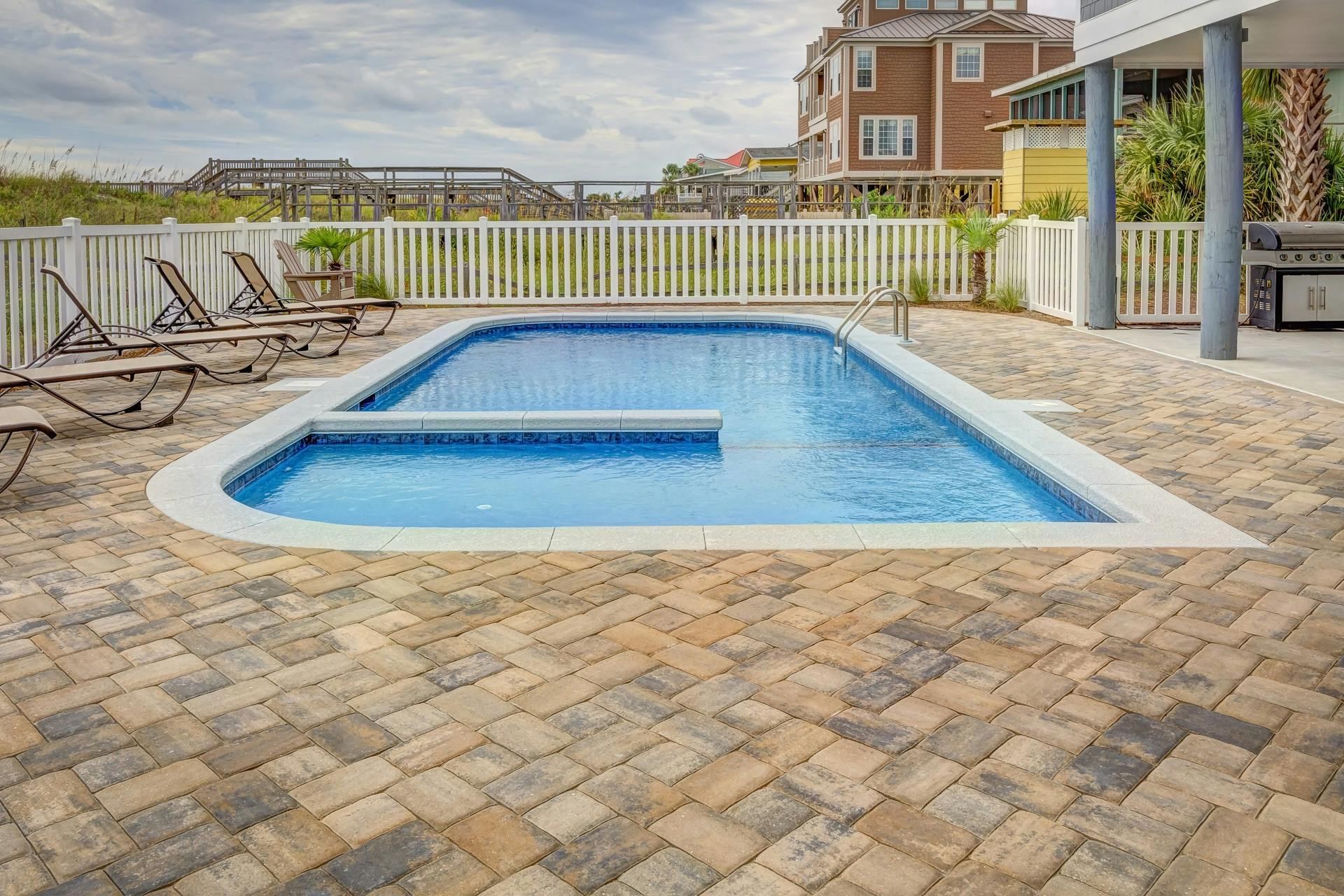A pool is a great addition to any backyard, offering fun, relaxation, and a way to cool down. But it’s important to keep it clean and safe. Without regular upkeep, a pool can become dirty, unsafe, and costly to fix. Spending a little time each week can go a long way toward keeping it in great condition for everyone to enjoy.
What Makes Pool Care Worth the Effort
No one wants to swim in water that looks cloudy or smells bad. Taking care of your pool helps you avoid these issues. Regular maintenance keeps the water clear and safe and prevents small problems from turning into big ones. It also helps your pool last longer and look better, which adds to the value of your home.
Keeping Water Chemistry Balanced
The Basics of pH, Alkalinity, and Calcium Levels
Good water chemistry is essential for a healthy pool. Keep the pH between 7.2 and 7.8 to ensure that chlorine works well and doesn’t irritate your skin. Alkalinity levels should be 80-120 ppm to keep the pH stable, and calcium levels should be 200-400 ppm to prevent corrosion or scaling. Regular checks and small adjustments will keep your pool in good shape.
How to Test Your Pool Water
Testing your pool water is a quick and easy way to catch problems early. Use a test kit or strips to check chlorine, pH, alkalinity, and calcium levels. Do this twice a week during the summer and once a week during the off-season. Keeping things balanced saves you time and money in the long run.
Cleaning and Skimming Your Pool
Why Skimming Off Debris is Important
Leaves, bugs, and dirt can quickly collect on your pool’s surface. Use a skimmer net daily to remove debris before it sinks and clogs your filter. This simple task keeps your water clear and helps your equipment last longer.
Vacuuming for a Deeper Clean
Skimming clears the surface, but dirt and debris can settle on the bottom. Use a pool vacuum weekly to clean the floor and hard-to-reach spots. Automatic vacuums can save time, but manual cleaning ensures every area is spotless. This also helps maintain chemical balance by removing organic matter.
Taking Care of Your Pool’s Filtration System
Cleaning Your Pool Filters
Filters trap dirt and oils, keeping your water clean. Depending on the type of filter you have—sand, cartridge, or DE (diatomaceous earth)—clean it every 1-2 weeks. Deep cleaning the filter once a season helps it perform well and lasts longer.
Checking and Running the Pump
Your pool pump circulates water, keeping it clean and well-mixed. Inspect the pump regularly for wear or leaks and run it for 8-12 hours daily during the swimming season. This keeps water moving and prevents it from becoming stagnant.
.jpg)
Using Shock Treatments for a Cleaner Pool
What Shock Treatments Do
Shock treatments add extra chlorine to kill bacteria, algae, and contaminants. This is especially useful after a storm, a pool party, or heavy use. Shocking restores water clarity and makes your pool safe for swimmers.
How Often to Shock Your Pool
Most pools need to be shocked once a week, but the frequency depends on usage and the environment. Pools near trees or in areas with frequent rain may need it more often. Follow the instructions on your shock product for best results.
Caring for Your Pool During the Off-Season
Using a Cover and Storing Equipment
A pool cover keeps leaves, dirt, and debris out while reducing water loss through evaporation. Store accessories like ladders and toys in a dry place to protect them from damage during the off-season.
Winterizing for Cold Weather
If you live in a colder area, prepare your pool for winter by lowering the water level and adding antifreeze to the pipes. Remove and store all removable items and securely cover your pool. This prevents damage and makes reopening it in the spring much easier.
Stopping and Controlling Algae Growth
Spotting Algae Early
Algae can make your pool green and slimy. Look for early signs like cloudy water or slippery surfaces. Addressing it quickly with regular cleaning and brushing prevents it from spreading.
Using Algaecides Effectively
Algaecides help prevent and treat algae. Add them to your pool every few weeks or as directed. Combine this with regular brushing and balanced water chemistry for the best results. Staying ahead of algae problems saves time and effort.
Enjoy a Clean, Safe Pool Year-Round
Maintaining your pool doesn’t have to be hard. By sticking to a routine, you can keep it clean, safe, and ready to use. Following these steps ensures your pool stays a great spot for relaxation and fun for years to come.

FAQs
How often should I test my pool water?
Test your pool water twice a week during summer and once a week during cooler months. This helps catch and fix any problems early.
Can I take care of my pool without hiring a professional?
Yes, with the right tools like a skimmer, vacuum, and test kit, you can handle most maintenance tasks yourself.
What is the best pH level for pool water?
The ideal pH level is between 7.2 and 7.8. This range keeps the water comfortable and the chlorine working effectively.
How do I stop algae from growing in my pool?
Prevent algae by keeping your water chemistry balanced, using algaecides, and brushing your pool walls regularly.
Do I need to winterize my pool if I live in a warm climate?
If winters are mild, you may not need to winterize fully. However, using a cover and storing equipment is still a good idea to reduce wear and tear.